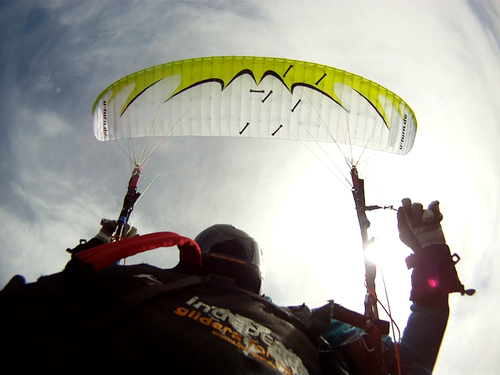Emotion 2 M |
|||||||||||||||||||||||||||||||||||||||||||||||||||||||||||||||||||||||||||||||||||||||||||||||||||||||||||||||||||


|
|||||||||||||||||||||||||||||||||||||||||||||||||||||||||||||||||||||||||||||||||||||||||||||||||||||||||||||||||||
Instability rating |
|||||||||||||||||||||||||||||||||||||||||||||||||||||||||||||||||||||||||||||||||||||||||||||||||||||||||||||||||||
|
|||||||||||||||||||||||||||||||||||||||||||||||||||||||||||||||||||||||||||||||||||||||||||||||||||||||||||||||||||
Glider characteristics |
|||||||||||||||||||||||||||||||||||||||||||||||||||||||||||||||||||||||||||||||||||||||||||||||||||||||||||||||||||
|
Launch preparations: easy
launch characteristics: balanced, climbs constantly, no guidance necessary, good feedback during inflation, no braking required, slows before zenith, control check simple, low takeoff speed
asymmetric collapse: canopy colllapses at high angle to leading edge, moderate dynamics, total course change 180-270°, (3), fast course change rate, marked forward pitching 60-75°, (4), high height loss 40-49 m, (3), high sink velocity 20-24 m/s, (3), G-Force 2,5- 2,9 G, (2)
Frontal collapse: moderate pitch backwards 30-45°, moderate pitch forwards 30-45°, moderate dynamics, no course change, (1), symmetric recovery, delayed return to normal airspeed, delayed reinflation of wingtips, high height loss 40-49 m, (3), low sink velocity 10-14 m/s, (1)
Spiral dives: rapid sink velocity increase, Moderate G-Force 3,5- 4.0 G, (2), Sink velocity after 720° <18 m/s, (3), Moderate maximum sink velocity < 18 m/s, (2), sink velocity increase < 3 m/s on brake release, (1), Course change 360-540° after spiral exit, (3), moderate height loss during recovery 30-60 m, (2)
B-Stall: normal force required, moderate pitch backwards 15-30°, moderate pitch forwards 15-30°, stable sink phase, no tendency to deform, immediate return to normal airspeed, 6-8 m/s, height loss on recovery < 20 m
big ears: simple initiation, stable flight phase, immediate automatic recovery, Vsink unaccelerated 2,5-3 m/s, Vsink accelerated 3,5-4 m/s
Steering behaviour: dampened to balanced |
|||||||||||||||||||||||||||||||||||||||||||||||||||||||||||||||||||||||||||||||||||||||||||||||||||||||||||||||||||
Notes |
|||||||||||||||||||||||||||||||||||||||||||||||||||||||||||||||||||||||||||||||||||||||||||||||||||||||||||||||||||
|
Launch Characteristic: All tested models had no real launching problems, none of the gliders showed marked tendencies to hang behind or overshoot the pilot during launching. All 3 LTF-A gliders behaved excellently, smooth inflation and good feedback via the pressure on the A-risers as the canopy climbed to the zenith. Asymmetric Collapse: More demanding were the Emotion 2M and Bodyguard 3M from U-Turn. Both these gliders collapse abruptly with a lot of wing area and large folding angles when compared with other gliders in their respective LTF classes. Due to the large resistance of the collapsed part of the wing, large pitch- and yaw-values result. In practice, such massive collapses only occur under severe turbulence, and we have no evidence in our accident statistics that these gliders are particularly dangerous Front Collapse: The Alpha 5 and Emotion 2 need a few seconds more to return to normal flight. Spiral Dive: Generally not problematic, high G-force. B-Stall: Both the Emotion 2 M and Bodyguard 3 M have a special construction on the extra long B-risers to help perform this manoeuvre: a handle with line / pulley attachment. The system works well: with little force (and long travel lengths) gliders enter a minimal B-stall with sink velocities of about -5m/s. The canopies sink at a steep angle rather than the classic vertical sink behavior of most other gliders. Entering and exiting the manoeuvre is accompanied by only little pitch movement. A conventional B-stall can also be performed on both gliders but to do so a long reach is required to grab the B-risers at their tops. Sink velocities increase by 2m/s for the Bodyguard and 3m/s for the Emotion. Big Ears: All tested gliders mastered this manoeuvre without any problems. The highest sink velocities (3.5-4.5 m/s) were measured on Novas Ion 2 due to its 2 A-line construction, followed by the Bodyguard M (3-4 m/s) which looses substantial surface area when its wingtips are collapsed. All other gliders lay between 3.5 m/s (trim speed) and 4.5 m/s (accelerated). No glider showed a tendency to oscillate during the manoeuvre, and brake appliance to exit from the manoeuvre was not required. |
|||||||||||||||||||||||||||||||||||||||||||||||||||||||||||||||||||||||||||||||||||||||||||||||||||||||||||||||||||
Rating |
|||||||||||||||||||||||||||||||||||||||||||||||||||||||||||||||||||||||||||||||||||||||||||||||||||||||||||||||||||
|
Safety class 4 This class of paraglider reacts demandingly to one or more of the following manoeuvres: frontal collapse, asymmetric collapse or spiral dive.Demandingly means that the above manoeuvres result in marked dynamic reactions from the glider and/or large height losses. Advanced piloting skills which need to be regularly practised, together with good personal reaction times are required to safely fly this class of gliders. Basic recovery techniques for ending a manoeuvre are not sufficient to maintain control, reduce height loss to a minimum and prevent subsequent critical reactions. Pilots should be able to recognise the onset of the above manoeuvres and be able to prevent or minimise their effects through immediate and precise pilot inputs. Additional experience such as regular ground handling and SIV training is required to safely fly gliders of this class. Special training or pilot skills which exceed standard training may be required for the safe performance of emergency descent techniques. Gliders of this Safety Class are not suitable for beginners, irregular flyers or low-airtime pilots. |
|||||||||||||||||||||||||||||||||||||||||||||||||||||||||||||||||||||||||||||||||||||||||||||||||||||||||||||||||||

